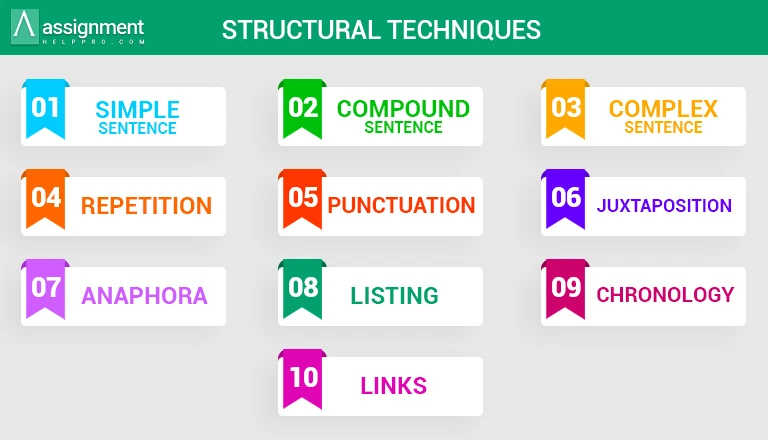Definition of Language Features
Language is one of the effective communication tools and is also an essential part of our lives. Each language has its own features. Usually, poets and writers who engage in creating literature work predominantly use language features and literary devices while writing. If you have deep knowledge about language features, then you can also understand the perspectives of an author or writer by doing a language analysis of their works.
In general, language features aid us to present our ideas in different forms from formal to poetic. Not just poems or literature, with the help of language features and structural techniques, you can create all types of reports, documents, academic papers, and letters of both formal and informal use.
Do you know about the various language features? If not, you are in the right place. Here, in this post, we will let you know the different types of language features and the language techniques the writers used to convey their ideas.
List of English Language Features
The language features are commonly categorized as
- Language Techniques
- Structural techniques
- Literary Devices
Language Techniques
The words and phrases that a writer uses to emphasize a topic or theme are referred to as language techniques. You can use the language elements anywhere in your content to make it easier for readers to understand what you’re saying.
If you know everything about language elements and techniques, you can play well with your content. There are numerous language strategies in English. You can present your content in any style and format using language techniques.
Discussed below are some of the common verbal language techniques.
Noun
It is a word that identifies a person, place, or thing. A noun is of different types such as common noun, proper noun, abstract noun, and collective noun.
The Common Noun refers to people or things.
Eg: Man, Woman, Boy, Girl.
A Proper Noun is a name that identifies a specific noun.
Eg: Africa, Jenifer, Monday.
The Abstract Noun is a type of noun that refers to qualities, ideas, and conditions that have no physical reality.
Eg: Friendship, Happiness.
Collective Nouns are groups of things or people.
Eg: Audience, Jury, Players.
Pronoun
It is a word that is used in place of a noun or a noun phrase. I, me, he, she, herself, you, it, that, they, each, few, many, who, whoever, whose, someone, everybody, etc. are the common pronouns that establish a strong connection with the readers.
Eg: I prefer it.
Verb
It is a word that describes the action. You can use a verb in different tenses depending on when the action is done.
Eg: He walked to the auditorium. Here, walked is a verb.
Imperative
They are verbs used for giving warnings, commands, orders, or instructions. It can be positive or negative.
Eg:
- Don’t go there!
- Come here!
Adjective
It is a word that describes the characteristics of a noun.
Eg: She is Sad. Here the word sad is the adjective which explains the emotion of a girl.
The adjectives are commonly classified into 12 types. The types of adjectives include
Comparative adjective:
It compares two different things or people. Some common comparative adjectives include taller, faster, more expensive, etc.
Eg: Jack is shorter than Robert.
Superlative adjective:
It compares more than two things or people by mentioning which one is the most supreme. Loudest, least valuable, fastest, etc. are a few examples of superlative adjectives.
Eg: Willium is the smartest member of our team.
Predicate adjective:
This type of adjective occurs in the predicate of a sentence as a subject complement. It follows linking verbs in clauses and sentences.
Eg: The pizza is delicious.
Compound adjective:
It is formed from multiple words that are connected by a hyphen. Some examples of compound adjectives are cross-eyed, happy-go-lucky, etc.
Eg: He is tired of her never-ending complaints
Possessive adjective:
This type of adjective is used to express ownership or possession. Some commonly used possessive adjectives include his, her, their, our, your, their, and whose.
Eg: My favorite food is Biryani.
Demonstrative adjective:
It is used to describe relative positions in time and space. This, that, those, and these are the frequently used demonstrative adjectives.
Eg: This clock is costlier than that one.
Proper adjective:
This type of adjective is formed from proper nouns. Generally, proper adjectives are used to say something that is related to a specific person or place. Some examples of proper adjectives include Indian, Orwellian, etc.
Eg:I was reading an Indian Novel.
Participial adjective:
It is based on participles. i.e., the words that usually end in –ing or –ed. Some examples of participial adjectives are reading, impressed, and bored.
Eg: I am impressed by your artistic skills.
Limiting adjective:
This type of adjective restricts a noun rather than describing its qualities. It overlaps with possessive adjectives and demonstrative adjectives. The limiting adjective examples include your, some, and these.
Eg: I bought some chocolates at the shop.
Descriptive adjective:
It describes the qualities, traits, or characteristics of a noun or a pronoun.
Eg: She is a friendly person.
Interrogative adjective:
This type of adjective is used to ask questions. Some frequently used interrogative adjectives are what, whose, and which.
Eg: What is your favorite movie?
Distributive adjective:
It is used to refer to members of a group individually. The words that are distributive adjectives are every, each, neither, and either.
Eg: Every player in the team performed well.
Adverb
It is another important language feature. An adverb is a word or phrase that modifies the meaning of a verb, adjective, or another adverb.
A verb, for example, ‘She sings beautifully.’
An adjective, for example, ‘He is truly fascinating.’
Another adverb, for example, ‘She strolls gradually.’
Many adverbs end in “-ly”.
Common examples of adverbs include Financially, Abruptly, Willfully, Endlessly, Delightfully, Lightly, Quickly, Eternally, Firmly, Delicately, Sorrowfully, Wearily, Beautifully, and Truthfully.
Other examples of adverbs would be words that portray how something was done or how it was finished. These future words like: Uneasily, Weirdly, Cheerfully, Expertly, Wholeheartedly, Randomly, Brutally, Really, Briskly, Sloppily, and Wickedly.
Some adverb discloses to us where the move has made a place. Here, There, Underground, Somewhere, Everywhere, In, Inside, Out, Upstairs, Outside, and Downstairs.
A few adverbs disclose to us that when the move has made place: Now, First, Last, Early, Yesterday, Tomorrow, Today, Later, Regularly, Often, Never, Monthly, Always, and Usually.
Some adverb discloses to us the degree of the activity: Very, Too, Almost, Also, Only, Enough, So, Quiet, Almost, and Rather.
Till now we have seen the common verbal language techniques with some examples. Next, let us move to another language feature which is structural techniques.
Structural Techniques
So, what exactly is a structural method? Structural highlights are crucial in every language. They primarily concentrate on describing the language’s structure in detail. If a language is not properly structured, it will lose its significance. Without a proper structure, even a straightforward sentence will be meaningless. A simple definition of a language structure is the order in which ideas appear in a text.
For instance, take a story. The events in a story need to be properly structured if it is to be interesting; otherwise, the story will sound forced. Structural techniques should be used to enhance the language, not just in a story, but in any form, from a single sentence to a novel.
The structure is critical in language. You should be aware of the following common structural techniques.
Simple Sentence
A sentence that contains one clause with a subject and a verb is called a Simple Sentence. It is usually short and to the point. It is a popular technique used to attract readers easily.
Eg: The train was late.
Compound Sentence
A compound sentence is a sentence that contains two independent clauses that are joined with a conjunction. It is one of the important language structures that are used to connect two ideas.
Eg: I like tea and my sister likescoffee.
Complex Sentence
A complex sentence usually contains one or more subordinate clauses.
Eg: She returned her mobile after she noticed it was damaged.
Repetition
Repetition means using a word or a phrase more than once.
Eg: Hand in Hand
Punctuation
Punctuations are marks that sort out the meanings of different texts. Its main purpose is to clarify the meanings of the text by separating words, phrases, clauses, or links. Some basic punctuation marks are period, comma, colon, semicolon, a hyphen, question mark, exclamation, apostrophe, brackets, and quotation. Punctuation is a commonly used structural device while writing poems.
Eg: “No, sir, I didn’t inform them”.
Juxtaposition
Here, at least two thoughts, places, characters, and their activities are placed next to each other in a narrative or a sonnet for creating examinations and complexities.
Writers utilize the artistic procedure of juxtaposition to astonish their readers and inspire their advantage. Usually, they build up a correlation between two disparate things by setting them one next to the other. The examination adds striking quality to a given picture, controls the pacing of a sonnet or a narrative, and gives a logical association between two different hazy ideas.
Eg: Beggars can’t be choosers. Here ‘beg and choose’ are contrasting functions and this proverb implies that one cannot be both desperate and have any choice in the decision.
Anaphora
Anaphora means the repetition of a word or phrase at the beginning of successive clauses. Generally, writers utilize Anaphora in writing or discourse. They purposely rehash the initial segment of the sentence to accomplish an artistic effect.
Anaphora adds conspicuousness to thoughts as well as adds mood to it and accordingly, makes it more agreeable to read and simpler to recollect. This strategy gets the reader’s consideration.
Eg: If my daughter moves to New York, I will move there too.
Listing
Listing is the way of writing a number of connected items one after the other to emphasize a particular quality. It is a popular structural device used when writing essays and research papers. To make the points familiar to the readers, the writer uses a listing.
Chronology
It refers to the arrangement of events in an order of time. In literature, the authors use Chronology to narrate the events in a story. Also, it is easy for the readers to understand the events that are in Chronology. The arrangement of events can be done in different styles. It can be linear, reverse, and non-linear.
Links
The link is also one of the structural techniques that connect the start and the end of a text while narrating. For a natural narration, the authors use links.
Emotive Language
A language that is proposed to make an enthusiastic reaction is known as Emotive Language. Writers generally use this to trigger the emotions of the readers. When a sentence is said in a normal way, it won’t create any impact in the minds of the readers. If an emotional value is added to that same sentence, then it will create a different reaction in the minds of the readers.
For example:
“Put that plastic bottle in the recycle bin”
This sentence sounds commanding.
“You should recycle the plastics because it saves the planet”.
Here, this sentence suggests action along with an emotional response.
The Emotive language when used effectively creates a relevant effect on the audience. But remember, you should not overuse emotive language. Use this language only when there is a need.
By now, you would have gained knowledge about the language and structural techniques. In the next section, let us have a deep look at the literary devices.
Literary Devices
Poets and authors of literary works employ literary devices to convey their concepts or messages. You will have no trouble comprehending the author’s perspective if you are familiar with the literary device.
There are two types of literary devices: literary techniques and literary elements.
Literary Techniques
Literary techniques are the figurative language used by writers for narration. It is nothing but the figures of speech that generally the authors or writers who are involved in creating poems or any other form of literary works use.
Here are some common literary techniques the writers use predominantly.
Allusion
Basically, it is an indirect reference to an individual, place, thing, or thought of historical, social, abstract, or political significance. Furthermore, allusion doesn’t depict in detail the individual or thing to which it alludes. Also, it is only a passing remark. In allusion, the writer anticipates that the reader should have enough information to detect the allusion and handle its significance in a book.
Allegory
Usually, allegory is an interesting expression. With the help of Allegory, a writer can advance their good and political point of perspective. A cautious study of a metaphorical bit of writing can give us an insight into its writer’s psyche concerning how he sees the world and how he wants the world to be. The goal of its utilization is to lecture an ethical exercise.
Assonance
It is the repetition of vowel sounds that creates internal rhyming within sentences and phrases. The writers use assonance to add literary value to their work and to catch the attention of the audience.
Idiom
An idiom is a set of articulations or an expression that involves at least two words. Writers and open speakers use idioms liberally. The writer utilizes an idiom to expand their language, make it more extravagant and spicier and help them in passing on indirect implications to their purposeful crowd.
Imagery
Generally, the writers utilize dynamic language to speak to objects, activities, and thoughts so that it offers to our physical faculties. It produces a lively and graphic introduction of a scene that interests whatever number of the reader’s faculties as would be prudent. It helps the reader’s creative mind to envision the characters and scenes in the art piece.
Simile
It is a comparison of two different things using ‘like’ or ’as’. To make a description more vivid, the poets predominantly use figures of speech.
Metaphor
It is a word or a phrase that describes something in a literally untrue way. Metaphor is a common poetic devices and hence poets utilize them in poems and literature.
Hyperbole
It is an exaggerated statement that is not meant to be taken literally by the reader. It is often used for emphasis.
Personification
It is a representation of an object or non-living thing as humans. It is a common literary technique that poets and storytellers use.
Alliteration
Alliteration refers to the use of the same letter and the same sound at the beginning of pronunciation. It is a literary device that helps to create a set of words starting with the sound of the same consonants.
Irony
It is a statement that helps to express an opposite meaning instead of a literal meaning. Verbal, Situational, and Dramatic are three different types of irony.
Onomatopoeia
These are words that give a vibe of a sound. Some examples of Onomatopoeia sounds include giggle, grunt, sprinkle, drizzle, etc. Just to make the readers feel the action, the writer uses this figure of speech in their sentences.
Oxymoron
Here the expressions are joined with at least two opposing terms.
Symbolism
It means the utilization of images to signify thoughts and characteristics by giving them representative implications that are different from their exacting sense. With the help of Symbolism, a writer adds twofold degrees of implications to his work. Symbolism in literature expands enthusiasm for readers as they discover a chance to get an insight into the writer’s psyche on how he sees the world and how he considers basic objects and activities, as having more extensive effects.
Zoomorphism
Zoomorphism implies allocating an individual, occasion, or divinity with carnal qualities. While then again, anthropomorphism is attributing human characteristics to different objects, creatures, and cruel animals to give an insight into their capacities.
Literary Elements
To develop a literary piece, the writer uses literary elements such as theme, plot, mood, characters, etc. For creating the work of their interest, the literary elements are great tools for the writers.
Theme: Core concept or idea of a story.
Plot: The logical order of events that form a story.
Conflict: A problem in a story. The entire story usually revolves around a conflict.
Protagonist: A lead role in a story. It can be the main character.
Antagonist: It is a character that is in conflict with the main character or a protagonist.
Dialogue: The characters in the story narrate using dialogue.
Conclusion
We hope you are now clear with the language features. You can do language analysis easily if you have good knowledge about language techniques, structural techniques, literary elements, and literary techniques. Learn all the language features discussed in this guide and try to use them when you compose any piece of writing. Knowing the language features is necessary, as it helps to write your homework or literary piece of work as well as to analyze other writers’ work.
What is the definition of Language Features?
Language Features are identified as sentence structure, noun pronunciation, vocabulary faces, and other aspects that provide meaning to communicate through written or oral, or multimodal texts.
What are examples of Language Features?
Some examples of Language Features are alliteration, figurative Language, colloquial Language, metaphor, simile, consonance, and more.
What are the 5 Language Features?
Alliteration, assonance, colloquial language, dialect, and dialogue are five Language Features.
Give examples of 5 Literary Techniques.
- Metaphor – Rose is the queen of the garden.
- Simile – Rose is like the queen of the garden.
- Imagery – The rose felt smooth as silk.
- Symbolism – “Love” is represented by a rose.
- Personification – The rose smelt like a young lady.







